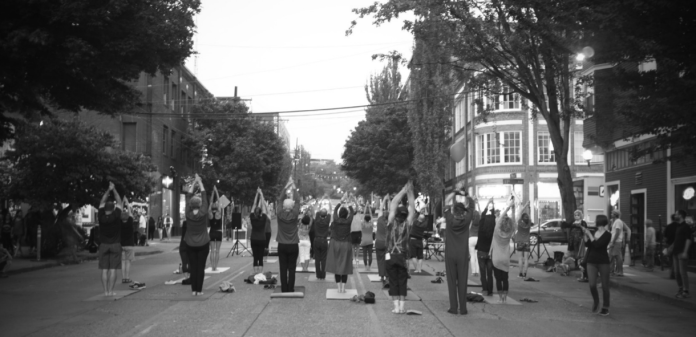
Yesterday, Capitol Hill Seattle Blog broke the story that Councilmember Teresa Mosqueda has a spot in mind to introduce ‘superilles’–or pedestrian superblocks modeled off Barcelona’s–to Seattle. Her proposed location buttresses Pike Street for three blocks east of Broadway and mirrors where the Seattle Department of Transportation (SDOT) conducted a pedestrianization pilot in 2015. Councilmember Mosqueda said she would like to get the superille implemented by the end of her first term.
“This is something I’d love to start exploring in 2020,” she said. “This is definitely on the wish list of accomplishments before my term is up.”
Councilmember Mosqueda indicated the outcome of the 2019 election–with seven city council seats up for grabs and four of those lacking incumbents–could set the stage for Barcelona superblocks. Electing car-centric candidates could also serve as an obstacle–and not the good kind calming out streets. If you’re looking for candidates with the vision and drive to make superilles a reality, The Urbanist’s Primary endorsements generally seek to highlight candidates in that mold. (Expect General Election endorsements by October.)
Speaking of endorsements, one of the reasons The Urbanist Election Board cited for endorsing Councilmember Mosqueda back in 2017 was her passion for pedestrianizing streets: “She also easily drops urbanist catnip on the campaign trail, highlighting the value of things like Barcelona’s superblocks,” the election board wrote. She brought it up both on the trail and in her endorsement questionnaire: “I would also like to look at other cities like Barcelona–where they have created ‘Superblocks’—large nine square city blocks as an intentional urban mobility plan to reduce traffic and cut pollution. These Superblocks have led to greater social and cultural opportunities, slowed traffic, and allowed for more pedestrians in dense urban areas throughout their growing city. That is the type of innovation we can create in our city.”
At the time, urbanists didn’t know how serious Mosqueda was about pedestrian superblocks and if it would really be something that could became a reality in her first term. Given her comments this week, she seems very serious about it, and the primary thing standing in the way could be who else is on the city council by the end of the year. For example, it’s hard to imagine somebody like Alex Pedersen, who skipped the Move All Seattle Sustainably (MASS) coalition candidate forum and has opposed transit, bike, and pedestrian infrastructure, being supportive of the idea. But some other candidates–like The Urbanist-endorsed Shaun Scott, Kshama Sawant, and Tammy Morales–appear much more supportive of it.
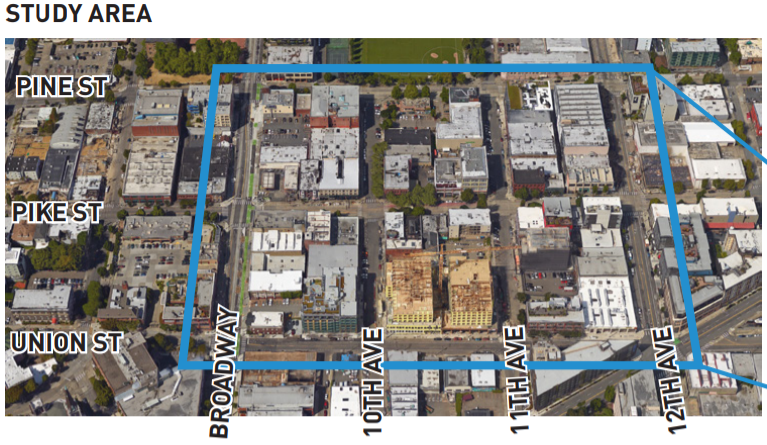
Before we get ahead of ourselves, here’s how the superille that Councilmember Mosqueda has suggested might work. The City would install traffic diverters on the interior streets of the rectangle outlined in blue and would generally prohibit motorists from traveling through the middle. Automobile traffic would still be allowed on the peripheral streets, in this case E Pine Street, 12th Avenue, E Union Street, and Broadway. Ridehailing pick-up and drop-off zones could be sited along these peripheral streets. Meanwhile people walking, biking, scooting, and rolling would be allow to permeate the superille at will and have a grand old time sans car traffic bearing down on them. See the diagram below for a visualization.
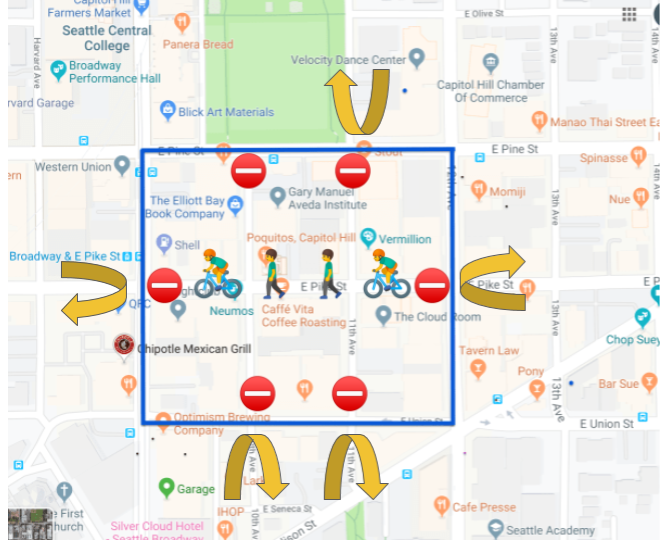
Freed up from their car-servitude, on-street parking spaces can be converted to other uses like pocket parks, street cafes, bike corrals, food trucks, and art installations. Rather than dodging errant motorists and swerving ridehailing drivers, pedestrians and bicyclists can relax and enjoy the ballet of the street, which we will be nurturing and allowing to flourish with the space we unlock. This is what world-class cities do with their street space, and I’ve heard rumor that Seattle wants to be one of those.
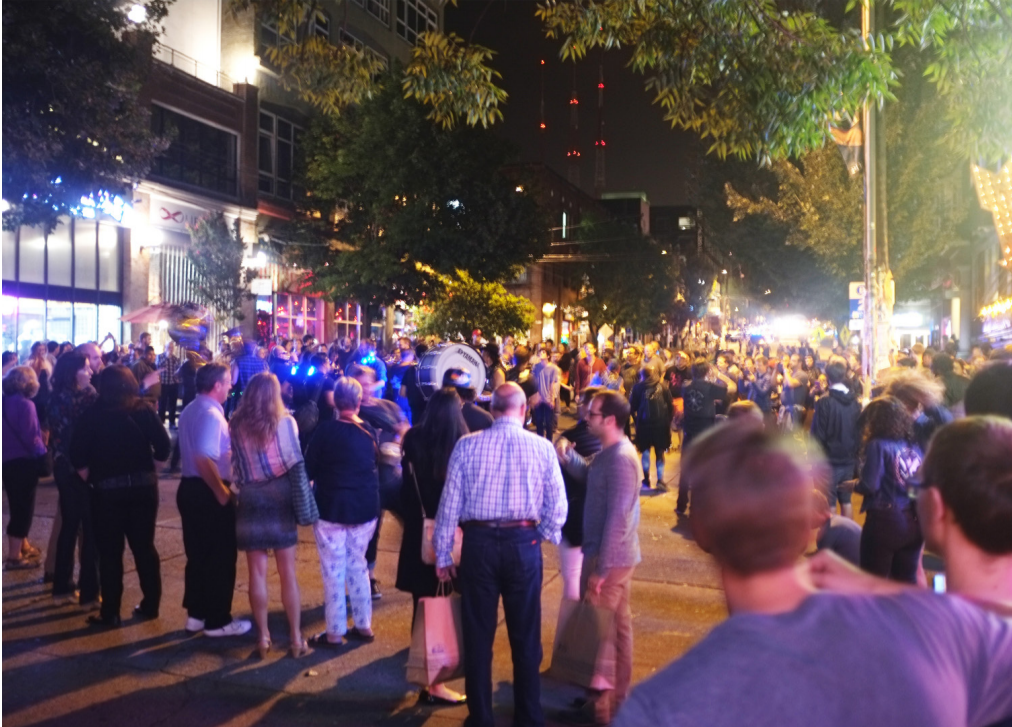
The selection of Pike Street suggests a nightlife and entertainment focus for Seattle’s first superille–it would be nice to see superilles added in more decidedly residential areas too–but the location would have the benefit of adjoining Cal Anderson Park and providing a pretty seamless and uninterrupted pedestrian corridor from Capitol Hill Station south to Union Street. And Pike Street being a major nightlife destination for the region could allow it be a good showcase and allow support for superilles to germinate around the city.
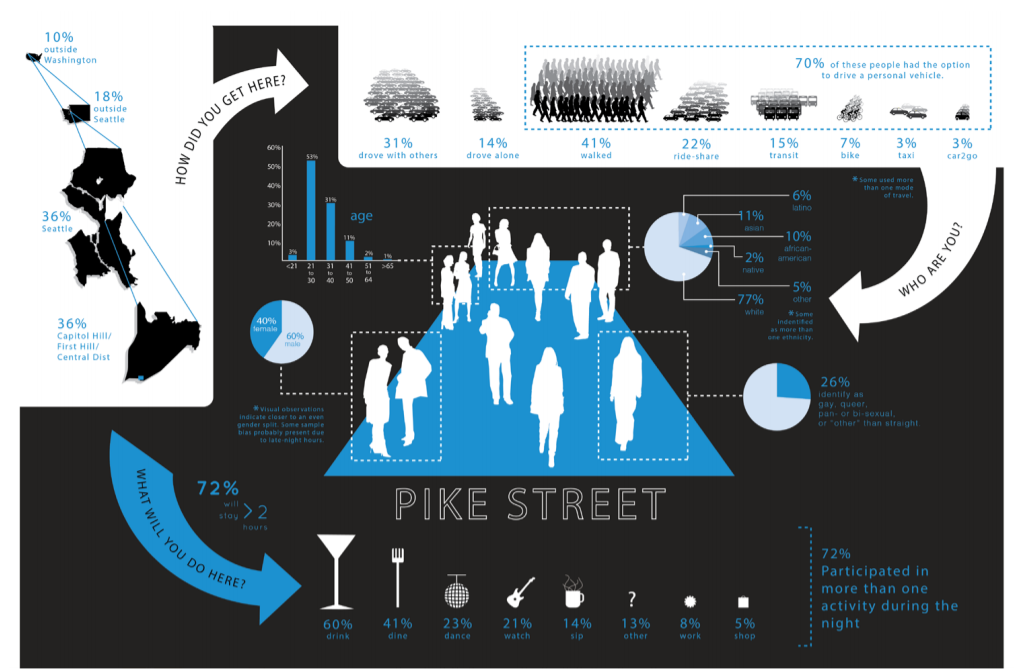
Critics are likely to suggest superilles will worsen congestion for motorists and hurt businesses by taking away parking and making freight deliveries more challenging. These criticism don’t ring true, though. For one, freight can be exempt from restrictions and loading zones can be reserved or added–without through-traffic to contend with, freight unloading may actually be easier. Moreover, Councilmember Mosqueda stressed that superilles would be good for business, in addition to their known benefits to safety and placemaking, during her interview with CHS Blog‘s Margo Vansynghel.
“In Barcelona (…) what they saw was an increase in overall sales for small businesses and an increase in foot traffic,” she said. “And that is true of what we’ve seen when we’ve gotten rid of parking spots and reduced traffic and lanes in front of small businesses across our own country… So I think it’s a win, win, win: a win for local business, a win for safety of pedestrians and bicyclists, and a win for the environment.”
A lot of work remains. Councilmember Mosqueda acknowledged that an outreach process to businesses affected would need to be conducted and details (like enforcement) hammered out. Business and resident outreach could build on the 2015 pilot, but it appears that report’s recommendations have been sitting on shelf gathering dust for the last three years before Mosqueda raised the topic again.
Transportation advocates have often felt like they are on their back foot lately as important safety and mobility projects are watered down, delayed, or canceled. Councilmember Mosqueda’s proposal, as preliminary as it is, feels exciting and serves as a reminder that advocates can still go on offense and make big gains.
Doug Trumm is publisher of The Urbanist. An Urbanist writer since 2015, he dreams of pedestrian streets, bus lanes, and a mass-timber building spree to end our housing crisis. He graduated from the Evans School of Public Policy and Governance at the University of Washington in 2019. He lives in Seattle's Fremont neighborhood and loves to explore the city by foot and by bike.


